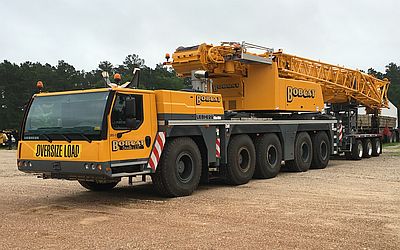
Tower cranes are a common sight but still a fascinating fixture on construction sites around the globe. Their towering presence is hard to miss, extending hundreds of feet into the sky, making literal towering contributions to the development of cityscapes and infrastructure. Unlike other heavy machinery, tower cranes offer a combination of height, lifting capacity, and compactness, making them indispensable for modern construction projects. Let’s review the different types of tower cranes, explore their unique features, and how to choose the right crane company in Texas for your project.
The Mechanics and Advantages of Tower Cranes
At the heart of a tower crane’s design is its tall, tower-like structure, from which it derives its name. This structure supports the jib and counter-jib, which are essential for lifting loads and maintaining balance, respectively. The vertical and horizontal reach of these cranes is impressive, allowing them to lift heavy loads high above the ground and transport them across significant distances.
Tower cranes are designed to maximize efficiency and safety on construction sites. They occupy minimal ground space, which is a critical advantage in crowded urban settings or when space is at a premium. Furthermore, many tower cranes are capable of self-erection, reducing the need for additional machinery and speeding up the construction process.
Types of Tower Cranes
Luffing Jib Tower Cranes
Recognizable by their diagonal jibs, luffing jib tower cranes, or luffers, are designed for work in tight spaces. Their ability to adjust the angle of the jib makes them versatile, and capable of operating within the complex geometries of urban construction sites. The compactness of luffers, combined with the strategic placement of their counterweights and the advantageous positioning of the operator’s cab, offers unobstructed views and facilitates precise load handling.
Derrick Cranes
Derrick cranes are the compact solution for space-restricted environments, including ship decks and rooftops. Their small footprint and remote-controlled operations make them an excellent choice for assembling or disassembling other cranes in challenging locations.
Self-Supporting Tower Cranes
Anchored firmly at their base, self-supporting tower cranes are the ideal choice for projects that do not necessitate height adjustments. Planning is crucial with these cranes, as their position is fixed once installed. They are commonly used in the construction of shorter structures where mobility is not a requirement.
Traveling Tower Cranes
For projects that cover large areas, traveling tower cranes offer unparalleled mobility. Mounted on tracks or rails, these cranes can move loads across the jobsite efficiently, eliminating the need for multiple cranes or repositioning.
Self-Climbing Tower Cranes
In the construction of skyscrapers and wind turbines, self-climbing tower cranes excel. They grow with the structure, attaching to it and adding new sections to the tower as needed. This innovative design allows for the continuous vertical progression of construction without the need for crane disassembly.
Hammerhead Tower Cranes
Hammerhead cranes are known for their robustness and versatility. The design features a horizontal jib mounted on a vertical tower, making it suitable for a wide range of lifting tasks. Their precision and ability to handle heavy loads make them a staple on many construction sites.
A Crane for Every Job
Selecting the right tower crane is a decision that impacts the efficiency, safety, and cost-effectiveness of a construction project. Considerations such as the types of materials to be lifted, the spatial constraints of the jobsite, and whether the crane needs to be mobile or stationary are all critical in making an informed choice.
Safety and Operational Considerations
Operating tower cranes requires specialized knowledge and expertise. Ensuring the safety of construction personnel and the surrounding area is paramount. Regular maintenance, adherence to safety protocols, and proper training for operators are non-negotiable aspects of crane operation.
Future Trends in Tower Crane Technology
The evolution of tower crane technology continues to push the boundaries of construction capabilities. Innovations in materials, control systems, and automation are making cranes safer, more efficient, and capable of handling increasingly complex tasks. As the construction industry grows, so too does the role of advanced crane technology in shaping the future of construction.
Contact Bobcat Contracting to Speak with a Crane Company in Texas About Tower Cranes and More
Choosing the right tower crane for your project is a decision that requires professional advice and expertise. At Bobcat Contracting, we offer crane rental services, providing access to a wide range of tower cranes suitable for various construction needs. Our team of experts at our crane company in Texas are ready to assist you in selecting the optimal crane for your project. Contact Bobcat Contracting today to explore your tower crane options.
